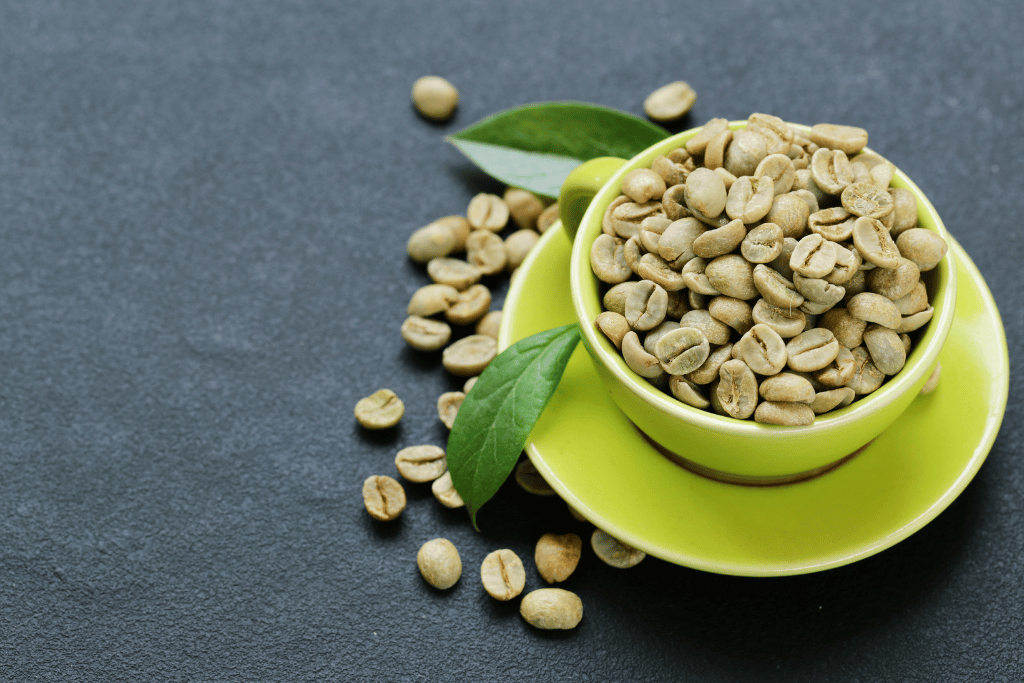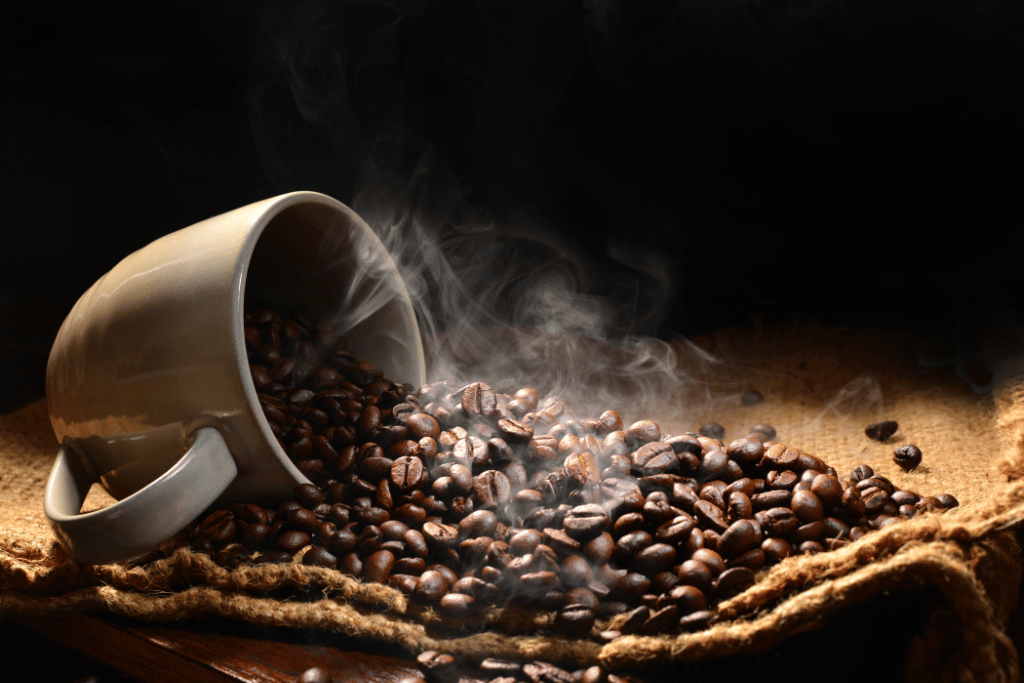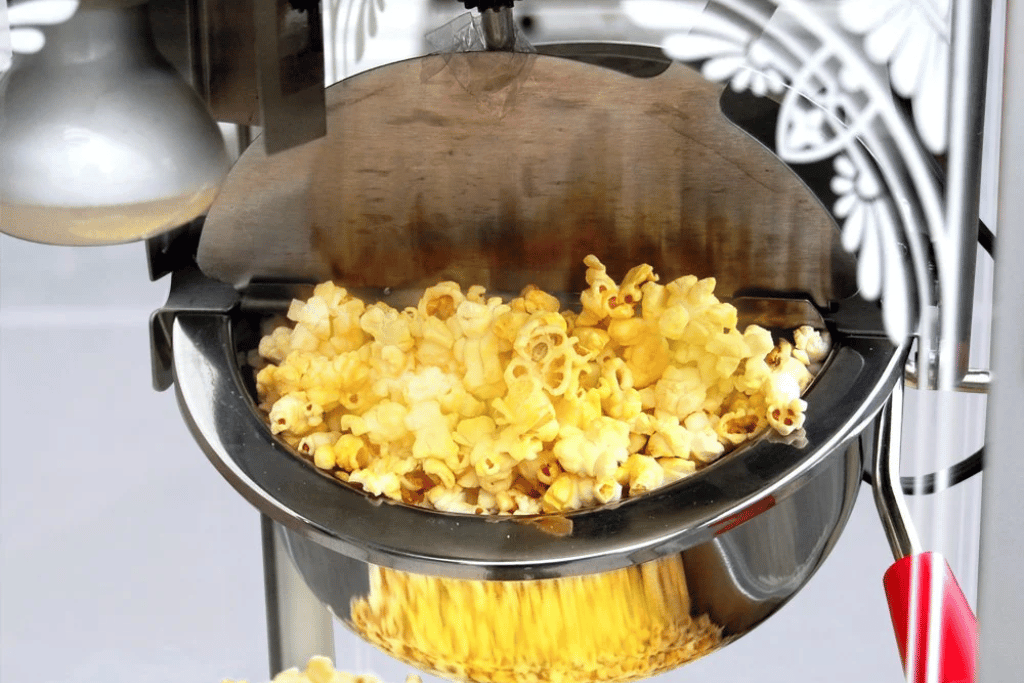
Hey coffee enthusiasts! I’m passionate about that perfect cup, and lately, I’ve been delving into unique ways to roast coffee beans. The air fryer, typically known for fries, might just be the unexpected solution for unlocking distinct coffee flavors.
But before we start air-frying those beans, let’s shine the spotlight on the true heroes here: the raw coffee beans. They’re full of potential, and I’m eager to see if the air fryer can bring out their unique qualities and find the right answer can you roast coffee beans in an air fryer?
So, grab your favorite coffee mug and join me in this exploration to determine if the air fryer can revolutionize our coffee experience. It’s about discovering fresh flavors in every cup.
Understanding Coffee Roasting
Coffee roasting is a pivotal step in the coffee production process, where green coffee beans are transformed into the aromatic and flavorful beans used for brewing. Traditionally, this process involves carefully heating the beans to specific temperatures to bring out their unique flavors, aromas, and characteristics.
A. Process of Traditional Coffee Roasting
In traditional roasting, beans are subjected to controlled heat in specialized roasters. The beans undergo various stages such as drying, browning, and caramelization, leading to the development of different roast levels—light, medium, and dark—each offering distinct taste profiles.
B. Factors Influencing the Roasting Process
Several factors influence the roasting process, including temperature, duration, airflow, and bean agitation. These variables are adjusted to achieve desired roast levels and flavor characteristics.
C. Different Levels of Roasts and Their Characteristics
The roasting duration and temperature impact the final roast level. Light roasts tend to preserve more of the bean’s original flavors, medium roasts strike a balance between flavor and body, while dark roasts bring out rich, smoky notes at the expense of some inherent bean characteristics.
Why Roast Coffee Beans at Home?

Roasting coffee beans in an air fryer has so many benefits. Let’s have a look at the benefits an air fryer offers while roasting coffee beans:
1. Even Roasting Potential
Air fryers provide a more even distribution of heat, potentially leading to more uniform roasts compared to certain DIY roasting methods.
2. Better Flavor and Aroma
Roasting coffee in an air fryer promises more intense flavors and richer aromas. The process claims to evenly roast beans, which could result in a consistent and enjoyable cup of coffee.
3. Time and Energy Efficiency
One of the appealing aspects of an air fryer is its efficiency. It’s said to take less time and use less energy compared to other roasting methods.
4. Convenience
Air fryers are known for their efficiency and ease of use. They heat up quickly and typically require minimal supervision, which could appeal to those seeking a hassle-free roasting experience.
5. Control Over Roast Level
Home roasting gives you the power to decide how dark or light you want your coffee to be. It’s all about finding that perfect roast level that suits your taste buds.
6. Saving Money
Making your own roasted coffee can be cost-effective. Buying green coffee beans in bulk tends to be cheaper than buying pre-roasted ones.
Considerations and Potential Drawbacks

A. Limited Capacity:
Most air fryers have limited space, allowing for roasting only small batches at a time. For avid coffee drinkers or those looking to roast larger quantities, this might be a drawback.
B. Control Precision:
While air fryers offer temperature control, achieving precise roast levels might be challenging. Fine-tuning roasting profiles to match specific flavor preferences could be more difficult compared to specialized coffee roasting equipment.
C. Flavor and Quality:
The crux of the debate revolves around the taste and quality of the coffee produced. Some argue that while convenient, air fryers might not yield the nuanced flavors and complexities achieved through other traditional methods.
How to Roast Coffee Beans in an Air Fryer
A. Temperature and Timing
- Ideal Settings: Set your air fryer to around 350°F (175°C). It’s a good starting point for roasting coffee beans.
- Roasting Time: Roasting usually takes about 10-15 minutes. Keep an eye on the beans to get the roast level you prefer.
B. Determining Roast Levels by Using Your Senses
- Visual Clues: Watch the beans. As they roast, they’ll change color from green to brown.
- Listen for Cracks: You might hear a cracking sound, indicating different roast levels. One crack means a lighter roast, while two cracks signal a darker roast.
C. Step-by-Step Process of Roasting Coffee Beans in an Air Fryer

Step # 1: Preheat the Air Fryer
Before adding the beans, preheat your air fryer to ensure even roasting.
Step # 2: Spread the Beans
- Place the coffee beans in a single layer in the air fryer basket. This helps them roast evenly.
Step # 3: Roast to Your Taste
- Watch and smell the beans. Roast until they reach your preferred darkness.
Step # 4: De-Gassing
- After roasting, let the beans rest for a few hours. This helps release excess gas, making your coffee taste better.
Step # 5: Storing Your Beans
- Store your freshly roasted beans in an airtight container. This helps maintain their freshness and flavors.
Tips for Successful Coffee Bean Roasting

Roasting coffee beans in an air fryer can yield fantastic results with careful attention to detail. Here are some tips to ensure a successful roast:
A. Temperature and Time Considerations
- Preheat the air fryer: Ensure the fryer is adequately preheated to the desired temperature before adding the beans.
- Monitor temperature: Use an external thermometer to verify the air fryer’s temperature accuracy for consistent roasting.
- Adjust time: Experiment with different roasting times to achieve your preferred roast level.
B. Importance of Agitation or Stirring
- Stir frequently: Regularly agitate the beans during the roasting process to ensure even roasting and prevent scorching.
- Consider bean movement: Understand the air fryer’s airflow and adjust bean placement or stirring accordingly for uniform roasting.
C. Cooling and Storing Roasted Coffee Beans
- Cool immediately: Transfer the roasted beans to a cool surface or a metal colander for rapid cooling and to halt the roasting process.
- Storage: Store the roasted beans in an airtight container once they have cooled completely to preserve freshness.
Safety Measures and Precautions
Roasting coffee beans in an air fryer involves working with high temperatures and hot equipment. Observing safety measures is crucial to prevent accidents:
A. Handling Hot Equipment and Beans
- Use Protective Gear: Wear oven mitts or heat-resistant gloves when handling the air fryer’s hot components.
- Avoid Contact: Refrain from touching the air fryer’s interior or the hot beans directly to prevent burns.
B. Preventing Potential Hazards During Roasting
- Ventilation: Ensure proper ventilation in the roasting area to dissipate smoke or odors produced during the roasting process.
- Avoid Flammable Materials: Keep flammable items away from the air fryer during operation to prevent fire hazards.
C. General Safety Precautions
- Read the Manual: Familiarize yourself with the air fryer’s instructions and safety guidelines before use.
- Supervision: Stay present during the entire roasting process to monitor and address any potential issues promptly.
Comparing Traditional Roasting Methods

A. Home Coffee Roaster
Method Overview: Home coffee roasters are specialized machines designed explicitly for roasting coffee beans. They offer precise control over temperature and airflow, allowing users to achieve consistent and customized roasts.
Pros:
- Precision Control: Enables fine-tuning of roast levels, enhancing consistency.
- Specialization: Tailored specifically for coffee roasting, resulting in high-quality roasts.
- Convenience: Streamlines the roasting process with automated features.
Cons:
- Costly Investment: Home coffee roasters can be pricey, especially advanced models.
- Space Requirements: Often larger in size, necessitating ample kitchen space.
B. Frying Pan Method
Method Overview: The frying pan method is a simple and accessible way to roast coffee beans at home. It involves using a regular frying pan on a stovetop and constantly stirring the beans to ensure an even roast.
Pros:
- Simplicity: Requires minimal equipment—just a frying pan—and basic supervision.
- Accessibility: Almost anyone can attempt this method without specialized gear.
- Immediate Results: Allows direct observation and quick adjustments during roasting.
Cons:
- Inconsistent Roasts: Achieving uniform roasts can be challenging, leading to flavor variations.
- Requires Attention: Requires constant stirring and monitoring, demanding time and focus.
C. Oven Roasting
Method Overview: Oven roasting involves using a conventional household oven to roast coffee beans. It allows for larger batches compared to some other methods but requires careful temperature management.
Pros:
- Batch Size: Capable of roasting larger quantities of beans at once.
- Beginner-Friendly: Relatively straightforward for newcomers exploring roasting.
Cons:
- Temperature Challenges: Maintaining consistent temperatures can be difficult.
- Uneven Roasting: Beans may roast unevenly due to oven heat distribution.
D. Using a Popcorn Machine
Method Overview: Repurposing a popcorn machine for coffee roasting involves adapting the appliance to roast small batches of coffee beans. It’s a fun and cost-effective way to experiment with roasting.
Pros:
- Affordability: Offers a budget-friendly entry point to home roasting.
- Compact Size: Typically small and easy to store in most kitchens.
- Experimentation: Allows for enjoyable testing of small batches.
Cons:
- Limited Capacity: Typically roasts only small amounts of beans at a time.
- Control Challenges: Difficulty in achieving precise roast levels due to limited control settings.
Each method provides its unique approach to home roasting, catering to different preferences, budgets, and levels of commitment to the roasting process.
Conclusion
In the quest for the perfect brew, experimenting with an air fryer for roasting coffee beans adds an interesting twist. While it promises convenience, its impact on flavor sparks ongoing discussion.
Whether it becomes your go-to method or a delightful experiment, using an air fryer for coffee roasting is all about finding what satisfies your taste buds.
Remember, the joy of coffee lies in exploring flavors and making each cup uniquely yours. So, embrace new methods, savor the journey, and relish every sip of your unique coffee experience.
Can You Use a Coffee Filter in an Air Fryer? A Comprehensive Guide
FAQs:
Can any air fryer be used for roasting coffee beans?
Generally, yes, but smaller or less powerful models may not achieve consistent results due to temperature variations.
What type of coffee beans work best for air fryer roasting?
Any variety of coffee beans can be roasted in an air fryer, allowing for the exploration of diverse flavors.
Can I roast a large quantity of beans in an air fryer at once?
Most air fryers have limited space, allowing for small batches. Roasting large quantities may require multiple batches.
How long should roasted coffee beans rest before brewing?
Allow the beans to rest for at least 12 to 24 hours after roasting to release excess gases and develop flavors before brewing.
Can an air fryer provide consistent roasting results for different roast levels?
Achieving precise roast levels might be challenging compared to specialized coffee roasting equipment, but varying roast levels can be achieved with experimentation